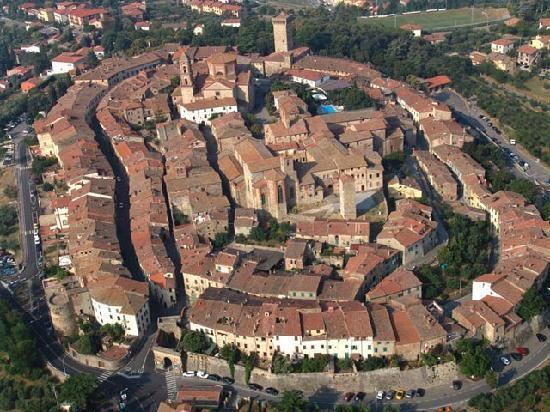Demonym(s) Lucignanesi Dialing code 0575 Postal code 52046 Dialling code 0575 | Elevation 400 m (1,300 ft) Time zone CET (UTC+1) Area 44.9 km² Local time Tuesday 3:00 PM | |
 | ||
Weather 18°C, Wind E at 11 km/h, 25% Humidity | ||
Lucignano is a comune (municipality) in the Province of Arezzo in the Italian region Tuscany, located about 70 kilometres (43 mi) southeast of Florence and about 25 kilometres (16 mi) southwest of Arezzo. As of 31 December 2004, it had a population of 3,483 and an area of 44.9 square kilometres (17.3 sq mi).
Contents
Map of 52046 Lucignano, Province of Arezzo, Italy
Lucignano borders the following municipalities: Foiano della Chiana, Marciano della Chiana, Monte San Savino, Rapolano Terme, and Sinalunga.
History and sights
The name Lucignano probably derives from the Roman family of the consul Licinio. Known as the "pearl of Valdichiana", Lucignano is a remarkably conserved medieval walled hill-top village (400 meters above sea level), elliptical in shape. Its altitude and strategic position on the road between Siena and Arezzo meant that between 1200 and 1500 it was continually the subject of battles between these cities, involving also Florence and Perugia. Its walls, with three gates, were constructed by the Sienese in 1371. Once the town came under the rule of Florence, construction began of the fortress, attributed to Bernardo Puccini.
Sights include:
Of note is the elaborate reliquary made for the church of San Francesco, which is now in the Museo Civico, on the ground floor of the 13th Century town hall (Italian: Palazzo Pretorio). Called the L’albero della vita (The Tree of Life; The Golden Tree or The Tree of Lucignano) the central stem is supported on a Gothic reliquary, from which spread out twelve branches, surmounted by a Crucifix and a pelican. On the branches there are sprigs of coral, representing the blood of Christ. The tree is gilded and bejeweled and is signed by two jewellers, Ugolino da Vieri in 1350 and Gabriello D'Antonio in 1471. Also in the museum are works by Luca Signorelli, the Sienese School, and a Crucifixion from Umbria.
Cinema
The 2010 film Certified Copy directed by Abbas Kiarostami was set and filmed in Lucignano.
